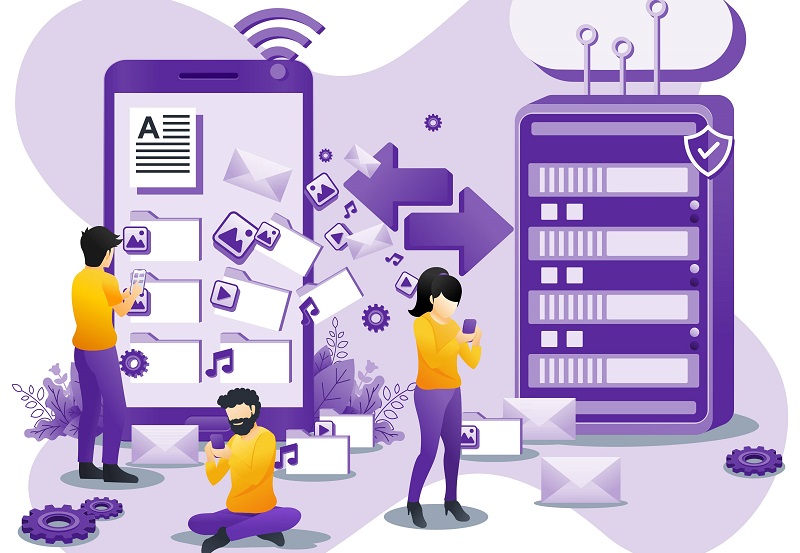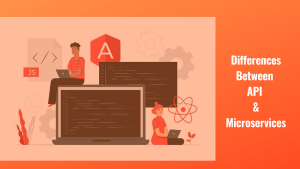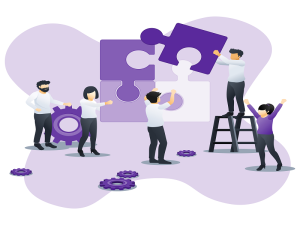
Multi-tenant Architecture for SaaS Apps
A multi-tenant architecture is essentially a framework in which a common instance of a software application is used to service several client applications or tenants. This multi-tenant architecture has found extensive adoption in SaaS applications, which cater to requests from tens and thousands of clients. The main reason for the adoption of multi-tenancy is the efficient and optimal use of resources and funds, along with delivering seamless service. This philosophy also works well for cloud-based applications.
As more and more organizations turn towards the cloud, its adoption continues to gain greater momentum as a leading trend. SaaS applications, one of the best offerings of cloud technology, are among the top gainers when it comes to the multi-tenant framework. What happens here is that a SaaS application runs a single instance on a single instance of a particular database, and allows multiple clients or tenants to access it via the web. In such a situation, even though resources such as servers and security protocols are shared among tenants, the data belonging to each are hidden and private. So no tenant gets to access, share or even view anyone else’s data.
Now, in the case of single-tenant architecture, one instance of the software can only cater to the requests from a single client or tenant. Every user or tenant of this application will need their own set of database and application instances. So obviously there is no sharing of resources between clients.
Why is multi-tenant architecture more preferred?
There are several reasons why a multi-tenant framework is more beneficial in the long-term, for SaaS applications.
• Highly optimized performance
Performance is the key identifier in a multi-tenant SaaS application. Multi-tenancy allows sharing of the technology stack, which in turn improves the speed, efficiency, and overall performance of the SaaS application. The developer acquires from the vendor, the shared codebase, features of the tech stack, and the databases simultaneously. This helps the developer optimize the overall response time of the software, upgrade it whenever required, and even enhance the speed.
• Improved ROIs
Experts say that in the long-term, multi-tenant architecture is great for increasing the returns on investment. With shared resources, databases, and security standards, the overhead costs are naturally eased out and shared among several clients. This is not the case when it comes to single-tenant SaaS applications. Moreover, since multiple clients access the same instance of SaaS application and the database, it reduces the costs of maintenance and development. This is not only great for the SaaS vendor but also favorable for the client. Even as new clients get added, no additional expenses are levied on them by the vendor, thereby decreasing the tenant’s investments.
• Hassle-free maintenance and software upgrades
The data structures remain uniform in a multi-tenant SaaS application so that all tenants can share the same version of an instance. This enforces uniformity and reduces complexities, and makes it easier to maintain the application.
The best part is when it comes to upgrading the SaaS application. Since it is shared among many tenants, the vendor only needs to make changes from a centralized node, for the upgrade to reflect in all the shared instances. This makes it easier for the SaaS vendor to upgrade the system and also reduces their overall expenses. Be modifications in the code base, applying bug fixes, or upgrading some features, all changes will be simultaneously available to all the tenants of a multi-tenant SaaS platform.
• Enhanced scalability
In case of single-tenant SaaS platforms, the vendor needs to develop unique datacenters every time a new tenant joins. But new hardware can easily be incorporated in an existing multi-tenant SaaS application and that too quickly. This freedom of scalability is one of the greatest advantages of multi-tenant SaaS, and both existing, as well as new tenants, can benefit from it. Since all tenants access the same infrastructure vendors do not need to scale up data centers separately for any of them.
• Effective use of resources
One of the smartest things about adopting multi-tenancy is that it facilitates the effective use of all resources. Resources waiting idle or being under-utilized is never a possibility. For instance, when one tenant does not use a particular resource, it is instantly allocated to another who needs it. This is only possible because multi-tenant architecture allows sharing of resources among tenants, thereby leading to its maximum utilization
• High availability and reliability
Another reason, why most SaaS vendors prefer multi-tenancy is its high availability. A highly available application ensures zero downtimes in case of disasters, so that tenant requests can be fulfilled seamlessly without impacting the workflow. In case one instance of the application goes down for some glitch, active client requests are automatically and instantaneously picked up by other active instances.
• Easy onboarding of tenants
Adding new tenants can be a nightmare for SaaS vendors, since it often brings with it, the risks of impacting the efficiency of an already running system. However, in case of multi-tenant SaaS, since the signing up process, as well as the configuration of domain and sub-domain are fully automated, onboarding new clients become hassle-free.
• Robust security
Owing to the shareable features of a multi-tenant SaaS, it used to be vulnerable to security threats. But with various advances, upgrades, and evolution in design principles, multi-tenant architecture is now considered to be highly secure. Standardized security protocols ensure that all tenants, both existing and new, are equally protected.
• Long-term cost optimization
Multi-tenant SaaS is especially preferred by organizations because it allows them access to maximum resources at a very affordable price. All resources are already available in a multi-tenant SaaS platform, and these are all shared among the tenants, which lowers the overall operational costs of tenant organizations in the long term.
Conclusion
To wrap up, it is now clear why multi-tenant architecture is the top choice for SaaS platforms. And the best thing is that existing single-tenant applications can always shift to a multi-tenant architecture with appropriate following standardized processes.




Comments
No comments yet.